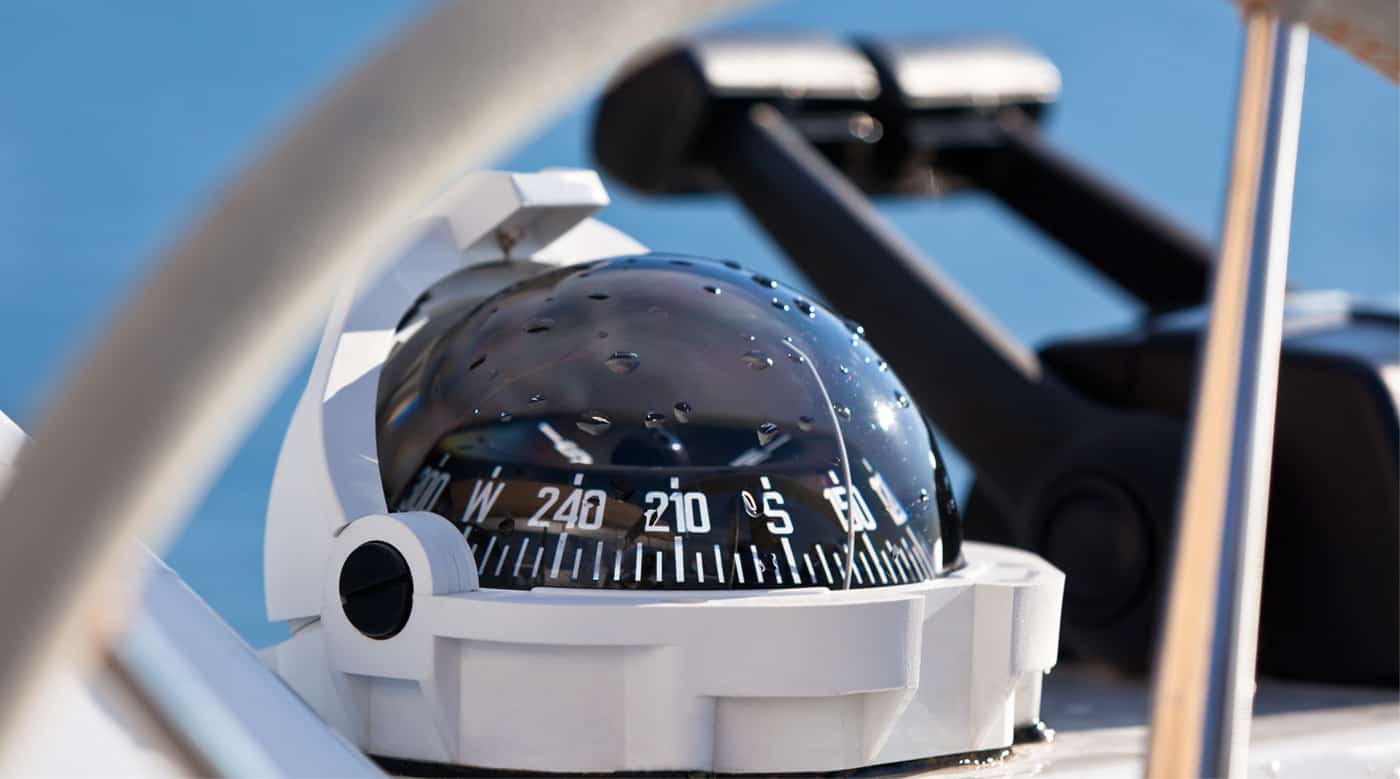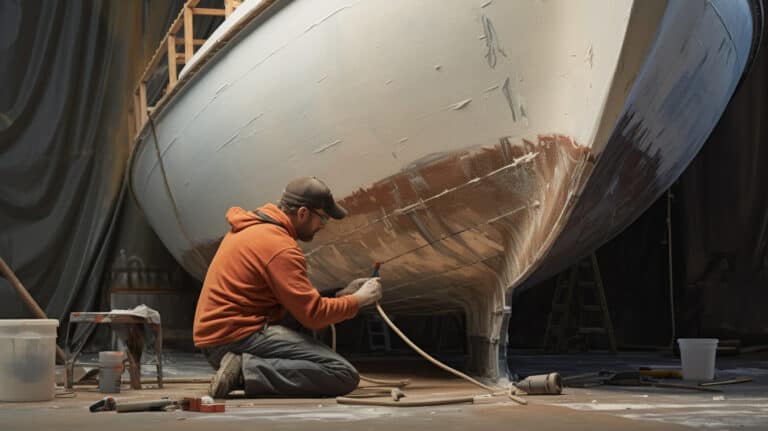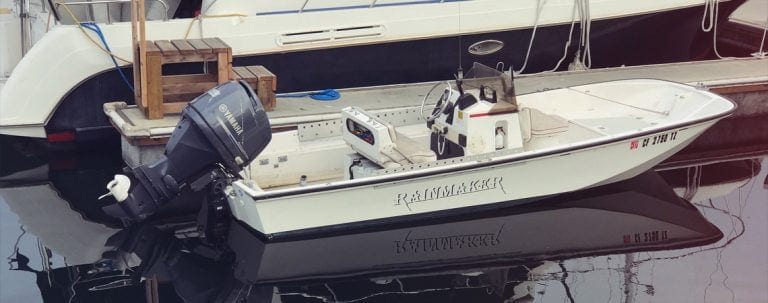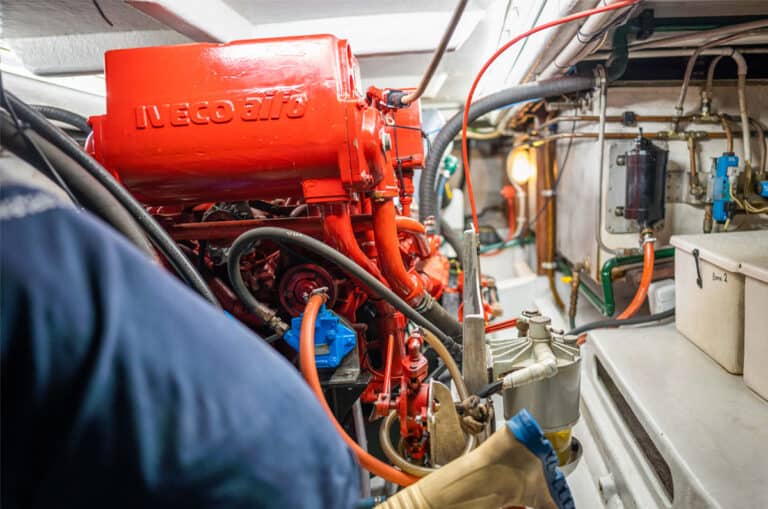So you have just bought a new boat and are ready to set sail.
All you have left to do is to mount the compass to help you with navigation.
Mounting it in the wrong place could lead to time being wasted, and could potentially even be a danger if you run into trouble.
Any seaborne vessel which is longer than 9 meters or 29.5 feet must have an onboard magnetic compass.
There are many other types of compass available, such as gyro, GPS, astrocompass, base plate, and card compasses.
Magnetic compasses are the most commonly used on board ships and this article is solely concerning them.
How does a compass work?
Magnetic compasses use the naturally occurring magnetic fields around the earth to help guide you when navigating.
They display the direction of magnetic north from anywhere you are located on the earth.
This is because the compass needle is magnetized and will align with the horizontal region of the Earth’s magnetic field.
This is very useful when visibility on board the ship is poor.
The compass is not impacted by weather and even when you cannot see your path in front of you, the navigational instructions are still reliable.
This makes magnetic compasses a highly useful tool for sailors who frequently sail through storms.
Where should a boat compass be mounted?
As compasses use the magnetic poles of the Earth to navigate, you should mount them somewhere away from magnets on the ship.
This is because the magnets can interfere with the compass and give you a false direction.
For a similar reason, you should also keep compasses away from iron and electronics.
You should mount your compass directly in front of your helmsman on board the ship.
This will make it easy to read as the ship is steered and allows for immediate corrections.
The location where a compass is mounted on a boat is known as the binnacle.
This is a container where the compass and all of the component parts are stored.
Traditionally, the binnacle is made from wood to ensure nothing interfered with the magnetic fields.
The top area of the binnacle contains the compass bowl, where the corrector magnets are stored.
How can you tell if your compass is broken?
Look inside the compass and see if you can notice any air bubbles.
This is a surefire sign that the compass is defective and should be replaced as soon as possible.
It may still appear operational, however, the accuracy of the directions will be greatly affected.
This could cause you to get very lost at sea.
Another way to check the accuracy of your compass is to compare it to a digital GPS.
You must ensure that the GPS is set to true north before beginning this process, or you will get a very different reading.
If your GPS and compass are both showing true north as being in the same direction, your compass is functioning correctly.
You could also use a chart with range markers to check the accuracy of your compass.
Look at the chart for the precise location of a landmark, such as a lighthouse.
You can then tell what the reading to and from that landmark is, which you can then compare against your compass.
If you notice a discrepancy, adjust the compass dials until you are on the correct path.
You can also consider visiting a store and comparing your compass readings to new units in the store.
These will all have been calibrated to show the correct readings.
Generally speaking, your compass should last for at least 10 years and maybe even longer with proper care and maintenance.
They are likely to need recalibration every few years and you can use this opportunity to check the compass is still functioning.
How do you install and set up a boat compass?
Sail your boat north slowly, holding your compass in your hand.
Ensure the compensation screws are set to neutral.
Hold it at a variety of different positions on the dash area of your boat.
Hold it in each position for a little while and check to see if the compass changes direction without the boat shifting.
This means that the location you are using is unsuitable for the compass to be mounted in.
Once you feel like you have found a suitable location, check there is no interference from metals and electronics.
Turn the boat’s engine off and on again while looking at the face of the compass.
The reading should not change as you do this.
The compass should be mounted on a flat and level surface with no more than 20 degrees deviation from North, South, East, and West.
If your surface is not flat, use a fairing block to ensure the compass is level.
You can then mount the compass here using a screwdriver.
The compass should be aligned with the keel of the boat.
If this is not done correctly then it results in what is known as an alignment error.
This is a constant error on all headings which is caused by the compass not being aligned correctly with the direction of the boat.
You should not use magnetic mounting hardware as this can cause interference with the compass.
Good options are made from stainless steel and solid brass, but if you are confused then we recommend testing your metal with a magnet.
You can mount your compass in a bracket, flush to your instrument panel, or overhead.
Bracket mounting is the easiest option to do yourself.
Overhead mounted compasses hang down from the ceiling so that the compass is set at eye level.
Once mounted, pull out a chart and set a course for a nearby range marker or landmark.
Begin to sail slowly towards it and check what direction the chart indicates you are traveling in.
Confirm this with your compass.
If the compass display is not showing the same reading, twist the small dials at the base to correct and calibrate the compass.




